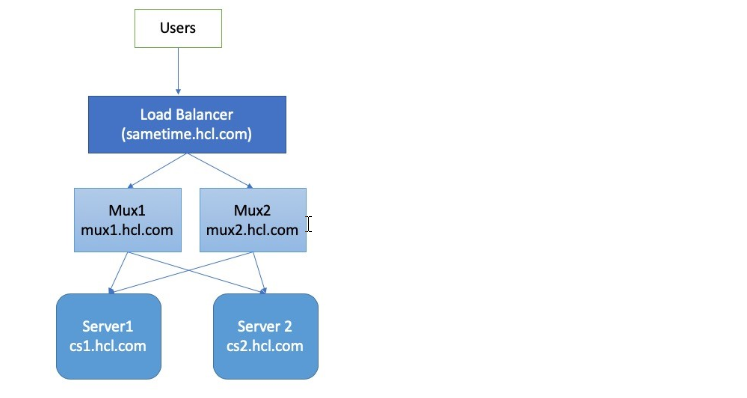Community Services
This topic explains the high availability capabilities of Sametime Community services and example deployment scenarios.
Community Concepts
A Sametime Community can have standalone servers or clustered servers. There can be multiple standalone servers in a community, or multiple clustered servers for redundancy. Multiple clusters within a single community are also supported. All servers must have network connectivity (port 1516) to all other Sametime servers that are part of the Sametime Community and share the same directory. This is known as a full mesh topology.
In a standalone server environment, the server is not clustered. Users are not allowed to log in to any other Sametime servers. A user’s contact list (buddylist) is stored on one Sametime server. In the event that the Sametime server is unavailable, the user will not be able to login to Sametime.
High availability can be achieved when Sametime servers are clustered together, along with a networking device to front-end the connection to the users. A networking device such as a load balancer, IP-Sprayer or Round Robin DNS can also provide load balancing between the members of the cluster. In the event that one cluster member becomes unavailable, the networking device would redirect the users to another cluster member. A load balancer capable of performing basic health checks to check if a server is up or down is recommended.
Example 1:A Sametime cluster with a load balancer.

Domino Clustering
Sametime Community servers are installed on top of Domino servers. When configuring clustering, a Domino cluster is also configured. A single Domino cluster is limited to 6 cluster members, thus the same applies to Sametime.
Cluster members should be collocated, and clustering is not recommended over a wide area network. Domino servers do not need to be in the same Domino domain, but they do need to be cross-certified, have access to every Sametime server document and connectivity on the Domino server port 1352.
Standalone Sametime Multiplexer for High Capacity
In addition to high availability, Sametime has support for high capacity by adding standalone Sametime Multiplexers, also known as “Standalone Mux.” A standalone mux is a server that hosts the stmux.exe and front ends the connection to the Community server. A single multiplexer can support up to 20,000 client connections. When multiple standalone muxes are deployed, a Community Server can support up to 100,000 client connections. Additionally, a standalone mux can support a cluster of Sametime servers, providing high capacity, high availability and failover.
Example 2:A Sametime cluster with standalone Muxes

Failover Considerations
When planning the number of servers to deploy in a cluster, consider a fail over situation. If one server were to fail and all traffic must be redirected to the remaining cluster members, there needs to be enough capacity on the remaining servers to handle this event.